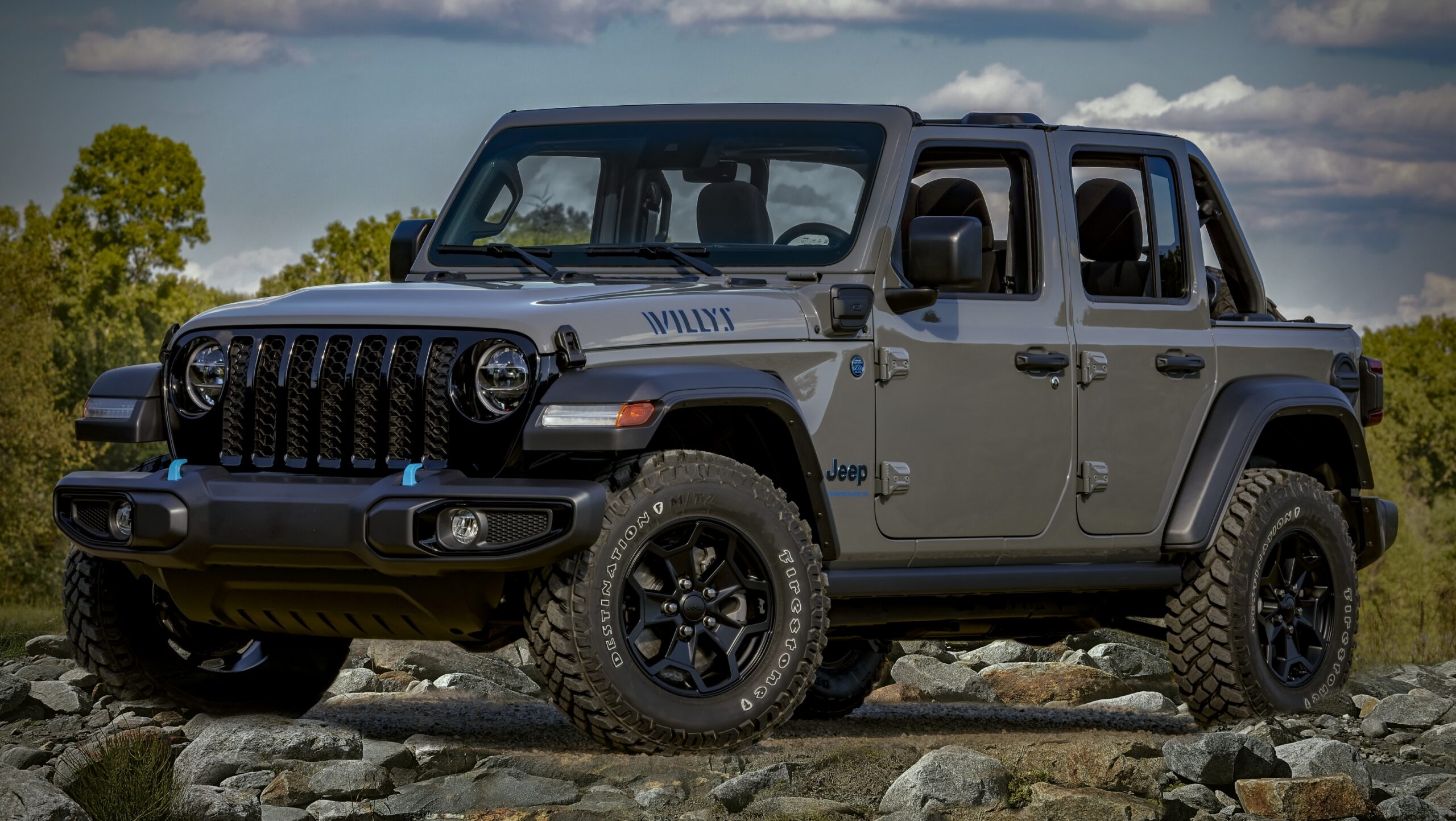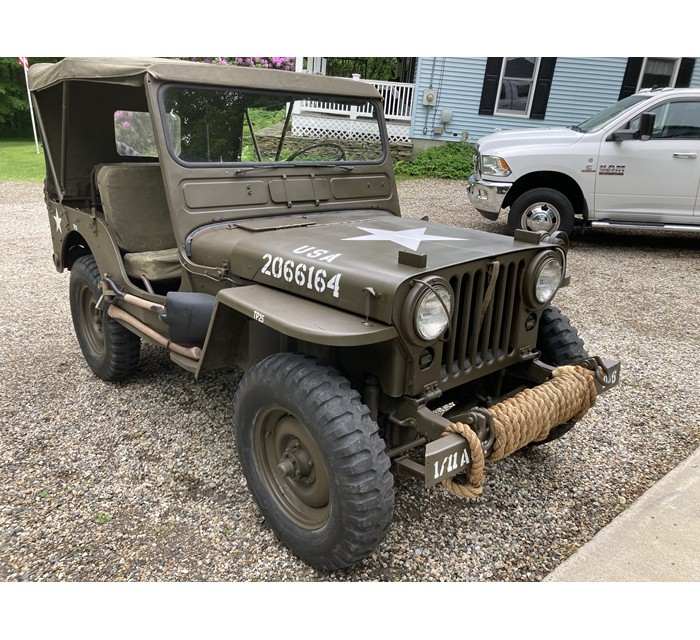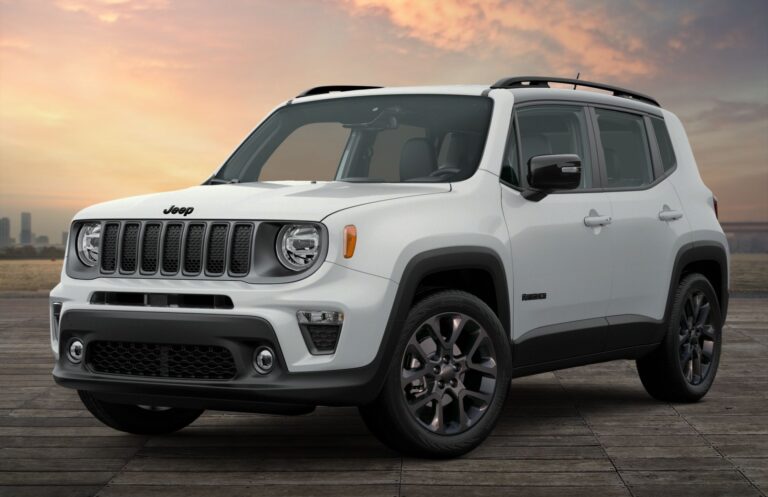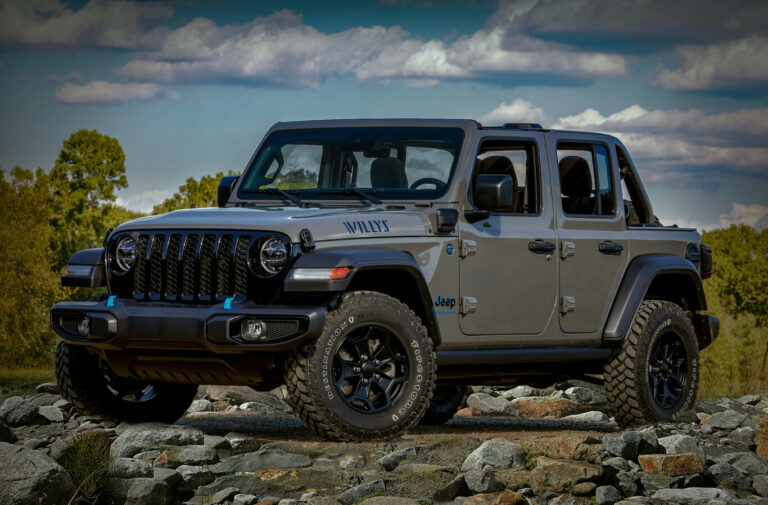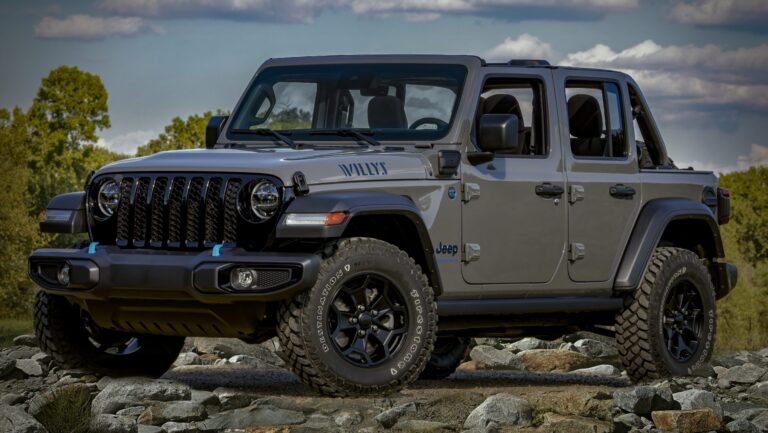Jeep XJ Cherokee For Sale: Your Comprehensive Guide to Owning a Legend
Jeep XJ Cherokee For Sale: Your Comprehensive Guide to Owning a Legend jeeps.truckstrend.com
The automotive world is replete with iconic vehicles, but few command the same cult following and enduring respect as the Jeep XJ Cherokee. More than just a utility vehicle, the XJ (produced from 1984 to 2001) represents a unique blend of rugged capability, simple design, and surprising versatility. For those in the market for a vehicle that can tackle trails, serve as a dependable daily driver, or become a canvas for customization, a "Jeep XJ Cherokee For Sale" isn’t just an advertisement – it’s an invitation to join a passionate community and own a piece of automotive history.
This comprehensive guide aims to arm prospective buyers with all the knowledge needed to navigate the market for a used XJ Cherokee. From understanding its enduring appeal to crucial inspection points and smart buying strategies, we’ll delve deep into what makes the XJ a legend and how to secure the right one for your adventures.
Jeep XJ Cherokee For Sale: Your Comprehensive Guide to Owning a Legend
The Enduring Appeal: Why Buy a Jeep XJ Cherokee?
The XJ Cherokee didn’t just fade into obscurity after its production ceased; it cemented its status as a highly sought-after classic. Its popularity continues to surge, driven by several compelling factors:
- Rugged Durability: At the heart of most XJs lies the venerable 4.0-liter AMC Inline-Six engine. Renowned for its "bulletproof" reliability and high torque output, this engine, paired with robust transmissions (like the AW4 automatic), can routinely exceed 200,000 to 300,000 miles with proper maintenance. Its simplicity makes it relatively easy to diagnose and repair.
- Unmatched Off-Road Prowess: Despite its unibody construction, the XJ is a formidable off-roader. Its compact size, short overhangs, and solid axles (Dana 30 front, Dana 35, Chrysler 8.25, or Dana 44 rear) provide excellent articulation and ground clearance. Coupled with a choice of dependable transfer cases (NP231 Command-Trac for part-time 4WD or NP242 Selec-Trac for full-time 4WD), the XJ can tackle trails that would leave many modern SUVs stranded.
- Simplicity and Maintainability: Unlike contemporary vehicles laden with complex electronics, the XJ is refreshingly straightforward. This makes it a favorite among DIY enthusiasts and mechanics, as parts are plentiful, affordable, and generally easy to replace. A vast online community and aftermarket support network further simplify maintenance and upgrades.
- Aftermarket Support and Customization: The XJ boasts one of the most extensive aftermarket parts selections of any vehicle. Whether you’re looking for lift kits, heavy-duty bumpers, lockers, or interior upgrades, the options are virtually limitless. This allows owners to tailor their XJ precisely to their needs, from a mild overlander to an extreme rock crawler.
- Classic Status and Value Retention: The XJ is rapidly transitioning from a used car to a classic. Well-maintained examples, especially later models (1997-2001), are holding or even appreciating in value. It offers an affordable entry point into classic car ownership with the added benefit of being incredibly functional.
- Versatility: The XJ’s balanced size makes it practical as a daily driver, comfortable for road trips, and supremely capable for weekend adventures. It strikes a rare balance between urban usability and wilderness readiness.

Understanding XJ Generations and Key Specifications
The Jeep XJ Cherokee underwent significant evolution during its production run. Understanding these distinctions is crucial when assessing a "Jeep XJ Cherokee For Sale" listing:
-
Early Models (1984-1996): "Pre-Facelift" or "Renix Era"
- Exterior: Characterized by more squared-off body lines, older-style interior, and sometimes the "Renix" fuel injection system (which some prefer for simplicity, others for its diagnostic quirks).
- Engines: Early 2.5L I4, 2.8L V6 (briefly), and the iconic 4.0L I6 (High Output version from 1991 onwards).
- Interior: Simpler dashboard, often prone to cracking.
- Appeal: Often more affordable, purist appeal for some, but may require more immediate attention to wear-and-tear items.
-
Late Models (1997-2001): "Facelift" or "Classic"
- Exterior: Rounded body lines, integrated headlights and turn signals, redesigned rear tailgate and taillights.
- Engines: Exclusively the 4.0L I6 (High Output), known for its robust performance.
- Interior: Significantly updated and more modern dashboard, improved HVAC controls, better door panels, and generally more comfortable seating.
- Appeal: Generally considered the most desirable years due to their refined interior, improved safety features (in some trims), and the fully developed 4.0L engine. They command higher prices.
Common Powertrain Options (Focusing on the 4.0L I6):
- Engine: 4.0L Inline-Six (High Output – HO) – 190 hp, 225 lb-ft torque. The gold standard.
- Automatic Transmission: AW4 (Aisin-Warner 4-speed automatic) – Highly reliable and popular.
- Manual Transmission: AX-15 (5-speed manual, 1989-1999) or NV3550 (5-speed manual, 2000-2001) – Both durable, but less common than the AW4.
- Transfer Cases:
- NP231 Command-Trac: Part-time 4WD (2WD, 4H Part-Time, N, 4L Part-Time). Most common and very robust.
- NP242 Selec-Trac: Full-time 4WD (2WD, 4H Full-Time, 4H Part-Time, N, 4L Part-Time). Offers flexibility for varying road conditions.
- Axles:
- Front: Dana 30 (all years) – Strong enough for most applications.
- Rear: Dana 35 (most common, generally weaker), Chrysler 8.25 (stronger, found in many 1991+ non-ABS models), Dana 44 (rare, typically found in older models or with specific tow packages).
Key Considerations When Buying a Used XJ Cherokee
Finding the right XJ means thorough inspection and understanding common problem areas. Don’t let these deter you; they are well-documented and often fixable, but they should influence your offer.
-
Rust: The XJ’s Arch Nemesis: This is the most critical inspection point. Check:
- Frame Rails: Especially where the unibody rails meet the front and rear control arm mounts.
- Floorboards: Lift the carpet, especially in the front footwells.
- Rocker Panels: The long metal strip beneath the doors.
- Rear Quarter Panels: Around the wheel wells and behind the rear wheels.
- Door Sills: Where water can collect.
- Surface rust is often manageable; extensive structural rust is a deal-breaker unless you’re planning a full restoration.
-
Engine (4.0L I6):
- Oil Leaks: Common from the rear main seal, valve cover gasket, and oil filter adapter. Many are minor, but significant leaks warrant concern.
- Cooling System: XJs run hot. Check for a clean, green (not rusty brown) coolant, a functioning fan clutch (or electric fan), and a non-leaking radiator. Overheating can warp the cylinder head (especially 0331 casting on 2000-2001 models).
- Exhaust Manifold: Cracks are very common, leading to a ticking sound. Easy to replace.
- Lifter Noise: Some ticking is normal, but excessive noise can indicate worn lifters.
-
Transmission & Transfer Case:
- AW4 Automatic: Check fluid color (red, not burnt brown), smooth shifts, and proper engagement. Listen for clunks or harsh shifts.
- Manual: Check clutch engagement, smooth shifts, and no grinding.
- Transfer Case: Ensure all 2WD/4WD settings engage properly. Listen for grinding or clunking. Check for leaks around the output shaft seals.
-
Suspension & Steering:
- "Death Wobble": A violent, uncontrollable shaking of the front end, usually triggered by a bump at highway speeds. It’s almost always caused by worn steering components (tie rod ends, track bar, ball joints, control arm bushings). Inspect these thoroughly.
- Lift Kits: Assess the quality of the lift. Are the control arms, shocks, and springs properly matched? Are there signs of extreme off-road abuse?
-
Axles: Check for fluid leaks at the differential covers and pinion seals. Listen for humming or grinding noises, which can indicate worn bearings or gears.
-
Electrical: Test all power windows, locks, lights, HVAC fan, and dashboard gauges. Pay attention to the blower motor resistor (common failure).
-
Interior: Headliner sag is almost universal. Check for cracked dashboards (common on pre-facelift models), torn seats, and missing trim pieces.
-
Modifications: Be wary of heavily modified XJs unless you’re familiar with the work or have it inspected by a specialist. Poorly installed modifications can lead to more problems than they solve. Ask for records and details on all mods.
-
Pre-Purchase Inspection (PPI): If possible, have a trusted mechanic (especially one familiar with Jeeps) perform a PPI. This small investment can save you thousands down the line.
Where to Find a Jeep XJ Cherokee For Sale
The XJ market is primarily a private seller’s game, though occasional dealership finds can occur.
-
Online Marketplaces:
- Facebook Marketplace: Often the best source for private sellers. Use specific search terms like "Jeep XJ," "Cherokee XJ," "4.0L Jeep."
- Craigslist: Still a viable option, but beware of scams.
- eBay Motors: Good for finding specific models or more unique builds, sometimes with shipping options.
- Bring a Trailer / Cars & Bids: For exceptionally clean or rare examples, often commanding higher prices.
-
Dedicated Forums & Groups:
- NAXJA (North American XJ Association) Forums: A fantastic resource for technical info and classifieds.
- Cherokee Forum: Another large community with a classifieds section.
- Local Jeep Clubs/Facebook Groups: Often have members selling well-maintained XJs within the community.
-
Word of Mouth: Let friends and family know you’re looking. You might find a gem from someone who knows its history.
Tips for a Successful XJ Purchase
- Set a Realistic Budget: Beyond the purchase price, factor in immediate maintenance (fluids, filters, spark plugs) and potential repairs for common issues. Leave room for desired modifications.
- Research Common Issues: Arm yourself with knowledge before you look. Print out a checklist.
- Ask Detailed Questions: Inquire about maintenance records, off-road history, flood damage, accident history, and why the seller is parting with it.
- Test Drive Thoroughly:
- Drive on varying terrain: city, highway, gravel roads.
- Test 2WD, 4H, and 4L. Listen for unusual noises.
- Check brakes, steering response, and acceleration.
- Monitor gauges (especially temperature and oil pressure).
- Inspect Top to Bottom: Bring a powerful flashlight. Look under the vehicle, open the hood, check the interior thoroughly. Don’t be afraid to get dirty.
- Negotiate: Based on your findings, be prepared to negotiate the price. Minor issues can be leverage.
- Factor in Ongoing Costs: Remember insurance, registration, and fuel economy (XJs are not known for being fuel-efficient).
Potential Challenges & Solutions
- Finding an Unmolested XJ: Most XJs have seen some modifications or hard use. Finding a completely stock, low-mileage example is rare and commands a premium.
- Solution: Be prepared to either pay more for a pristine one or accept that some work will be needed. Focus on structural integrity and engine health first.
- Rust Repair: If you find a heavily rusted XJ, the cost of professional repair can quickly exceed the vehicle’s value.
- Solution: Unless you’re a skilled fabricator or planning a full frame-off restoration, it’s often best to walk away from severe rust.
- "Jeep Things": Minor oil leaks, exhaust manifold ticks, and quirky electrical issues are often considered part of the XJ ownership experience.
- Solution: Understand that these are common and often not catastrophic. Budget for minor repairs and learn basic maintenance.
- Safety Features: Compared to modern vehicles, the XJ has limited safety features (no airbags until later models, basic ABS if at all).
- Solution: Drive defensively, consider modernizing lighting, and understand its limitations.
Jeep XJ Cherokee For Sale: Estimated Price Guide
The price of a used Jeep XJ Cherokee varies significantly based on year, condition, mileage, location, and modifications. This table provides a general guideline (prices in USD, subject to market fluctuations):
| Year Range | Condition Category | Typical Mileage Range | Price Range (USD) | Key Considerations / Description |
|---|---|---|---|---|
| 1984-1996 | Project/Parts | 180,000+ | $500 – $2,500 | Runs, but needs significant mechanical/body work (e.g., major rust, engine issues, transmission problems). Good for experienced mechanics or for parts. |
| Fair Daily Driver | 150,000 – 250,000 | $2,500 – $5,000 | Drives, stops, turns. Has noticeable wear-and-tear, some rust, minor leaks, cosmetic flaws. May need immediate repairs (e.g., cooling system, suspension components) to be reliable. Good entry point for DIY. | |
| Good Daily Driver | 120,000 – 200,000 | $5,000 – $8,000 | Well-maintained for its age, minimal rust, all major systems functional. May have minor cosmetic imperfections or small, non-critical leaks. Often stock or mildly modified. Solid foundation. | |
| Excellent/Collector | < 120,000 | $8,000 – $15,000+ | Very rare for pre-facelift. Exceptionally clean, low mileage, minimal to no rust, all original or tastefully restored. Likely a collector’s item. Price can vary wildly based on specific condition, originality, and seller’s perception of value. | |
| 1997-2001 | Fair Daily Driver | 150,000 – 250,000 | $3,500 – $7,000 | Similar to older models, but benefits from the updated interior and refined 4.0L. Expect wear, some rust, and maintenance needs. A common entry-level purchase for the facelift model. |
| Good Daily Driver | 100,000 – 200,000 | $7,000 – $12,000 | The sweet spot for many buyers. Reliable, generally well-maintained, minimal rust. May have some tasteful modifications (e.g., small lift, tires). Represents good value for a dependable XJ. | |
| Excellent/Collector | < 100,000 | $12,000 – $25,000+ | Very clean, low mileage, minimal to no rust, pristine interior. Often stock or with high-quality, professional modifications. These are becoming true collector’s items, especially 2000-2001 models in rare colors or trims. Prices can reach significantly higher for truly exceptional examples on auction sites. |
Note: Heavily modified or custom-built XJs can fall outside these ranges, depending on the quality of work and components.
Frequently Asked Questions (FAQ) about Buying a Jeep XJ Cherokee
Q1: What’s the best year XJ Cherokee to buy?
A1: The 1997-2001 models are generally considered the "best" due to their updated interior, improved unibody design, and the fully refined 4.0L High Output engine. They offer a more modern feel while retaining all the classic XJ ruggedness.
Q2: Is the 4.0L Inline-Six engine really that reliable?
A2: Yes, the 4.0L I6 is legendary for its durability. With proper maintenance (regular oil changes, cooling system care), it can easily last for hundreds of thousands of miles. Common issues like oil leaks or exhaust manifold cracks are generally minor and repairable.
Q3: How much should I expect to pay for a good XJ?
A3: A "good" daily driver XJ (1997-2001, 4.0L, minimal rust, mechanically sound) typically ranges from $7,000 to $12,000 USD. Prices can be lower for older models or higher for exceptionally clean, low-mileage, or well-modified examples.
Q4: What is "Death Wobble" and how do I fix it?
A4: "Death Wobble" is a violent, uncontrollable oscillation of the front wheels, usually triggered by hitting a bump at highway speeds. It’s almost always caused by worn or loose steering and suspension components (e.g., track bar, tie rod ends, ball joints, control arm bushings). The fix involves diagnosing and replacing the worn parts, often starting with the track bar.
Q5: Can an XJ Cherokee be a reliable daily driver?
A5: Absolutely. Many XJ owners use them as daily drivers. Their simplicity makes them relatively easy to maintain, and the 4.0L engine is very dependable. However, be prepared for classic vehicle quirks and generally lower fuel economy compared to modern cars.
Q6: What should I look for regarding rust, and where is it most common?
A6: Rust is the XJ’s biggest enemy. Key areas to check are the frame rails (especially near control arm mounts), rocker panels, floorboards (lift the carpet!), and the rear quarter panels around the wheel wells. Surface rust is often manageable, but structural rust can be a deal-breaker.
Q7: Are parts readily available for the XJ Cherokee?
A7: Yes, parts availability is excellent. Due to its long production run and popularity, both OEM and aftermarket parts are widely available at auto parts stores, online retailers, and specialized Jeep shops.
Conclusion
The Jeep XJ Cherokee holds a unique and revered position in automotive history. Its blend of rugged capability, simple mechanics, and timeless design has cemented its status as a highly desirable vehicle for off-road enthusiasts, classic car collectors, and anyone seeking a truly versatile and engaging driving experience.
Navigating the market for a "Jeep XJ Cherokee For Sale" requires diligence, research, and a keen eye for detail. By understanding the different generations, knowing where to look, and meticulously inspecting potential purchases for common issues like rust and mechanical wear, you can significantly increase your chances of finding a gem.
Owning an XJ isn’t just about having a vehicle; it’s about joining a passionate community, embarking on countless adventures, and maintaining a piece of a legendary legacy. Do your homework, buy smart, and prepare to discover why the XJ Cherokee continues to captivate hearts and conquer trails, decades after its prime.
